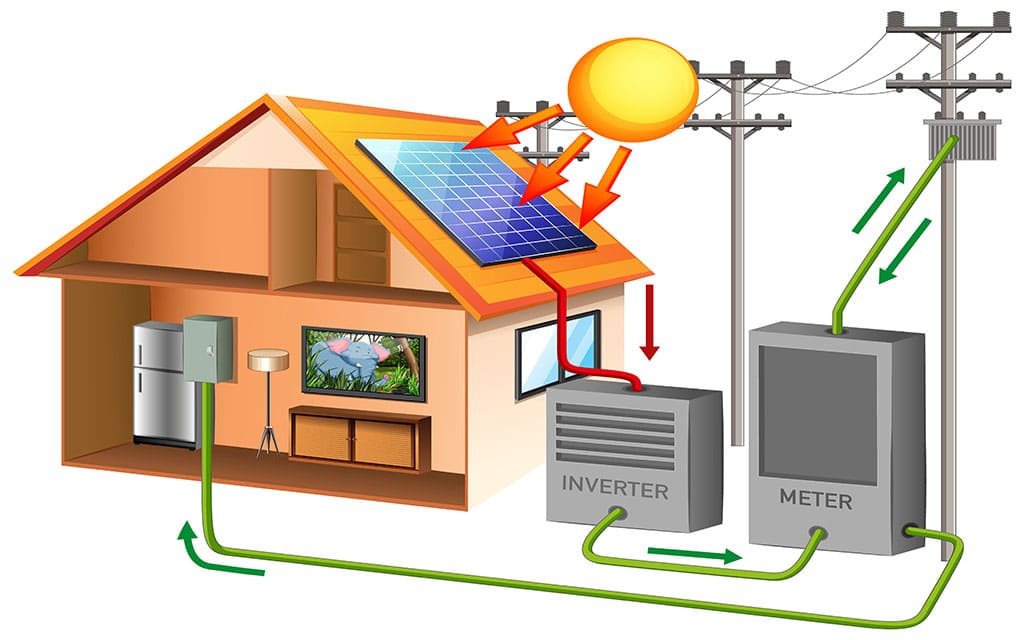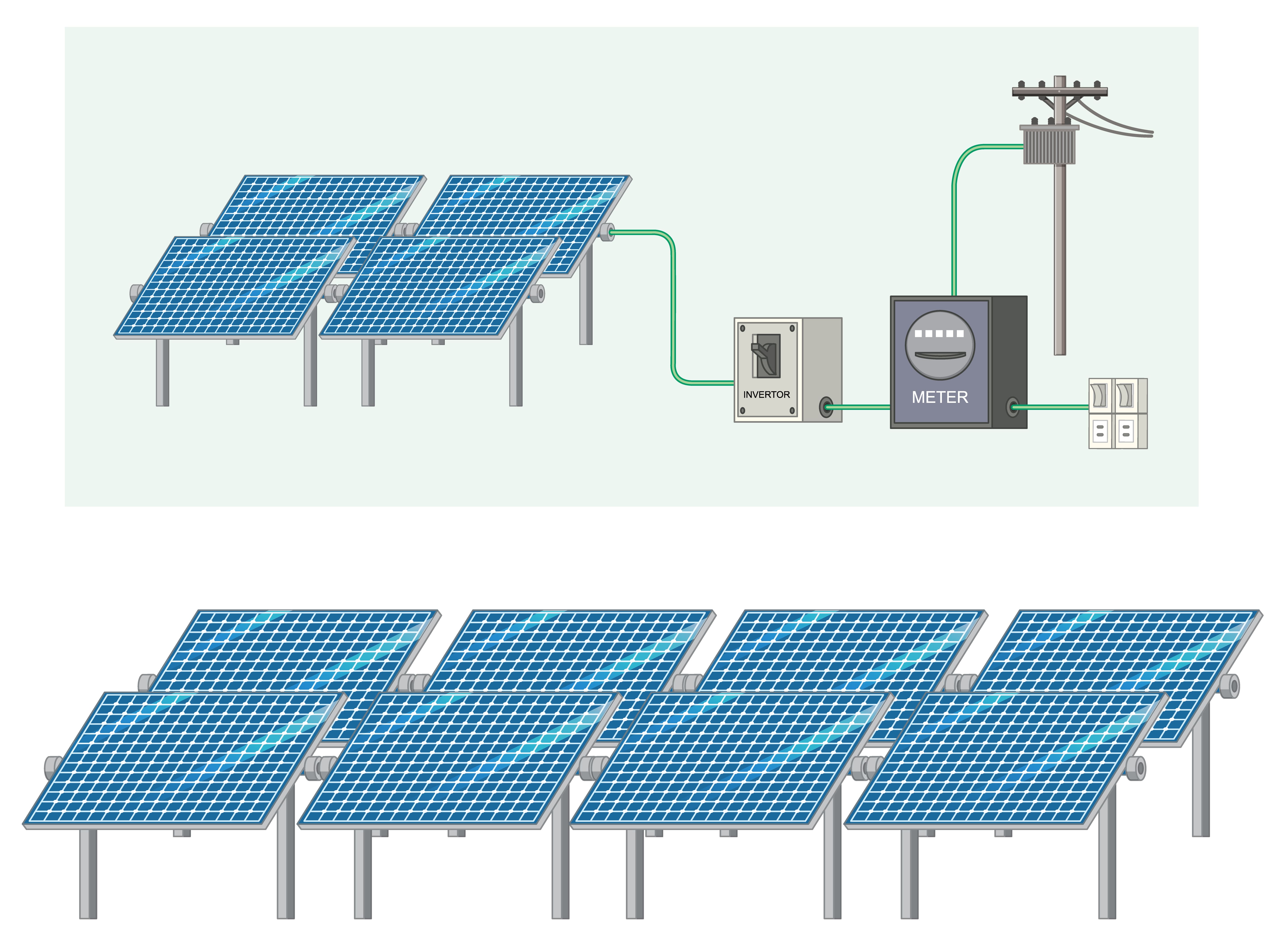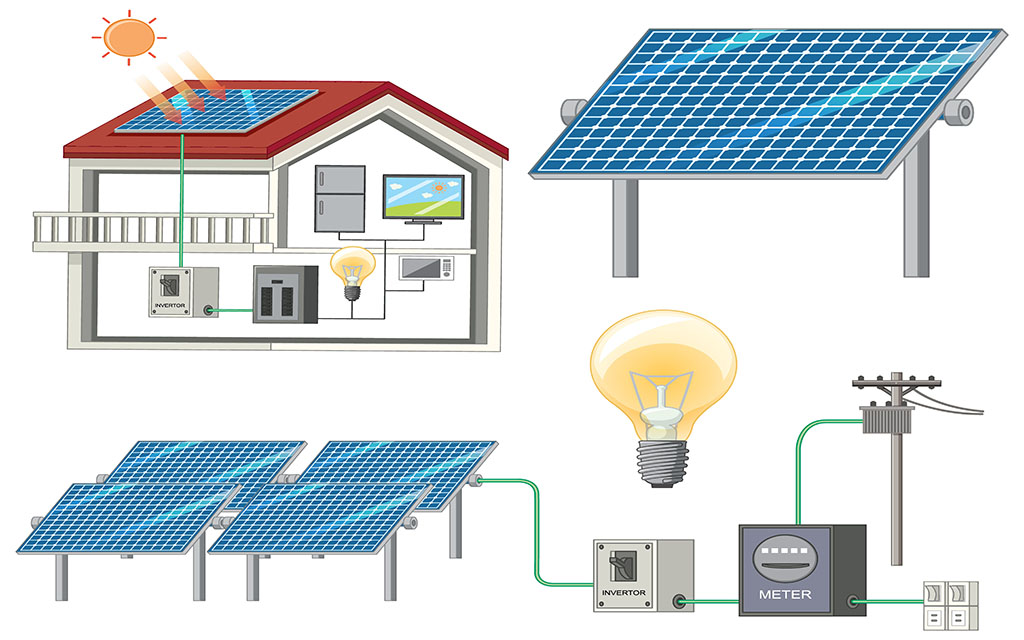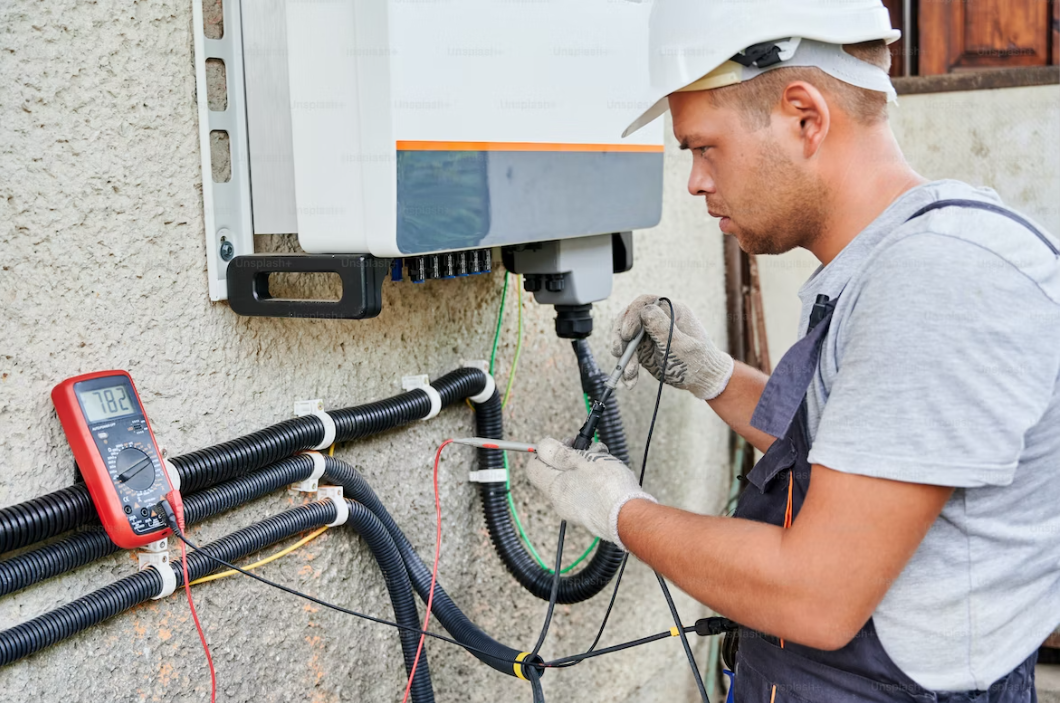Maximizing Solar Power Efficiency: The Role of Solar Inverters
In today's world, Solar power has emerged as a leading solution, harnessing the power of the sun to generate electricity. But have you ever wondered how solar panels convert sunlight into usable energy? Enter solar inverters, the unsung heroes of the solar power system. Solar inverters play a crucial role in maximizing the efficiency of solar power generation. They are responsible for converting the direct current (DC) energy produced by solar panels into alternating current (AC) energy that can be used to power our homes and businesses. But their importance doesn't end there. Solar inverters also help monitor and optimize the performance of the solar system, ensuring that every ray of sunlight is harnessed to its fullest potential. In this article, we will delve deep into the world of solar inverters, exploring their various types and their impact on solar power efficiency.

Understanding solar inverters
Solar inverters play a crucial role in maximizing the efficiency of solar power generation. They are responsible for converting the direct current (DC) energy produced by solar panels into alternating current (AC) energy that can power our homes and businesses. This conversion is necessary because most of our electrical devices and appliances run on AC power.
But their importance doesn't end there. Solar inverters also help monitor and optimize the performance of the solar system, ensuring full use of the sun's rays.They act as the brains behind the solar power system, constantly adjusting and fine-tuning the energy output to maximize efficiency.
The importance of solar inverters in maximizing efficiency
Solar inverters are essential for maximizing the efficiency of solar power generation. By converting DC energy into AC energy, they ensure that the power from the solar panels can effectively meet our energy needs. Without solar inverters, the DC energy produced by solar panels would be useless for powering our homes and businesses.
In addition to their role in energy conversion, solar inverters also play a crucial role in monitoring and optimizing the performance of the solar system. They collect important data on energy production, such as voltage and current levels, and relay this information to the solar monitoring system. This data allows system owners to identify any issues or inefficiencies and take appropriate action to maximize the system's overall performance.
Types of solar inverters - string inverters, microinverters, and power optimizers
There are several types of solar inverters available in the market today, each with its own unique characteristics and advantages. The three most common types are string inverters, microinverters, and power optimizers.
- String inverters: String inverters are the most traditional type of solar inverters. They are connected to multiple solar panels, known as a string, and convert the DC energy from the entire string into AC energy. String inverters are cost-effective and relatively simple to install. However, they are prone to the "Christmas light effect", which means that if one panel in the string underperforms., it can affect the overall efficiency of the system.
- Microinverters: Technicians typically install microinverters on each individual solar panel, , converting the DC energy from each panel into AC energy. This eliminates the "Christmas light effect" and allows each panel to perform at its maximum potential. Microinverters also offer better shade tolerance, as the performance of one panel does not impact the performance of the entire system. However, microinverters are generally more expensive than string inverters.
- Power optimizers: Power optimizers are similar to microinverters , which the technician installs on each individual solar panel. However, instead of converting DC energy into AC energy, power optimizers optimize the DC energy before sending it to a central inverter for conversion. Power optimizers offer the benefits of both string inverters and microinverters, as they allow for panel-level optimization while still using a central inverter. They are a good option for systems that experience shading or have panels installed at different angles.
How solar inverters work
Solar inverters work by utilizing a complex set of electronic components to convert the DC energy produced by solar panels into AC energy that can be used to power our homes and businesses. The process can be broken down into several steps:
- DC input: Solar inverters receive the DC energy produced by solar panels as input. This energy is in the form of direct current, which flows in only one direction.
- Maximum power point tracking (MPPT): Solar inverters use MPPT technology to ensure that the solar panels are operating at their maximum efficiency. MPPT constantly adjusts the voltage and current levels to extract the maximum amount of power from the panels, even under varying weather conditions.
- Conversion to AC: Once the DC energy has been optimized, solar inverters convert it into AC energy. This is done through a process called inversion, where the DC input is transformed into a waveform that resembles the standard AC power supplied by the utility grid.
- Grid connection: The AC energy produced by solar inverters is then fed into the electrical grid or used to power the building directly. In grid-connected systems, any excess energy can be exported back to the grid, while in off-grid systems, the energy is stored in batteries for later use.

Factors to consider when choosing a solar inverter
When choosing a solar inverter, we need to consider several factors to ensure optimal performance and efficiency. These factors include:
- Power rating: The power rating of the inverter should match the power output of the solar panels. Oversizing or undersizing the inverter can lead to inefficiencies and reduced performance.
- Efficiency: Look for inverters with high efficiency ratings, as this will ensure that the maximum amount of energy is converted from DC to AC.
- Durability and reliability: Solar inverters are exposed to harsh weather conditions, so it's important to choose a model that is built to last. Look for inverters with a proven track record of reliability and durability.
- Monitoring and data logging capabilities: Opt for inverters that offer advanced monitoring and data logging features. This will allow you to track the performance of your solar system and identify any issues or inefficiencies.
Common issues with solar inverters and troubleshooting tips
Like any electronic device, solar inverters can experience issues from time to time. Some common issues include:
- Inverter not turning on: This could be due to a faulty connection or a tripped circuit breaker. Check the connections and reset the breaker if necessary.
- Overheating: If people install solar inverters in high temperatures or in poorly ventilated areas, they can overheat. Make sure that people install the inverter in a cool and well-ventilated area.
- Error codes: Inverters often display error codes to indicate specific issues. Consult the user manual or contact the manufacturer for troubleshooting guidance.
- DC/AC leakage: Leakage of DC or AC electricity can be dangerous and people should deal with them immediately. Contact a professional for assistance.
The future of solar inverters - advancements and innovations
The field of solar inverters is constantly evolving, with new advancements and innovations to improve efficiency and performance. Some of the key areas of development include:
- Module-level power electronics (MLPE): MLPE technologies, such as microinverters and power optimizers, are becoming more popular due to their ability to maximize energy production and mitigate the impact of shading or panel mismatch.
- Hybrid inverters: Hybrid inverters combine the functionality of solar inverters with energy storage capabilities. This allows for the integration of battery storage systems, enabling homeowners to store excess energy for use during periods of low solar production.
- Smart inverters: Smart inverters have advanced monitoring and control capabilities. They can communicate with the grid and adjust their output to support grid stability and optimize energy usage.
Solar inverter maintenance and best practices
To ensure the longevity and optimal performance of your solar inverter, regular maintenance is essential. Here are some best practices to follow:
- Keep the area around the inverter clean and free from debris. Ensure that there is proper ventilation to prevent overheating.
- Regularly inspect the inverter for any signs of damage or wear and tear. If you notice any issues, contact a professional for assistance.
- Monitor the performance of your solar system regularly using the monitoring tools provided by the inverter manufacturer. This will allow you to identify any issues or inefficiencies early on.
- Follow the manufacturer's guidelines for maintenance and servicing. This may include regular firmware updates or cleaning of the inverter components.
-

Solar inverter maintenance
Solar inverter brands to consider
When it comes to choosing a solar inverter, there are several reputable brands to consider. Some of the top brands in the market include:
- SMA Solar Technology: SMA is a German manufacturer known for its high-quality and reliable inverters. They offer a wide range of inverters suitable for residential, commercial, and utility-scale applications.
- Fronius: Fronius is an Austrian company that specializes in solar inverters and charge controllers. They are known for their innovative and high-performance inverters that are designed to withstand extreme weather conditions.
- Enphase Energy: Enphase Energy is a leading manufacturer of microinverters and power optimizers. Their products are known for their high efficiency and reliability, and they offer advanced monitoring and data logging capabilities.
Conclusion
Solar inverters are an essential component of any solar power system. They play a crucial role in maximizing the efficiency of solar power generation by converting DC energy into AC energy. Solar inverters also help monitor and optimize the performance of the system, ensuring that every ray of sunlight is harnessed to its fullest potential. With the advancements and innovations in the field, solar inverters are becoming more efficient, reliable, and versatile. By choosing the right solar inverter and following best practices for maintenance, you can ensure that your solar power system operates at its maximum potential, allowing you to enjoy clean and sustainable energy for years to come.

